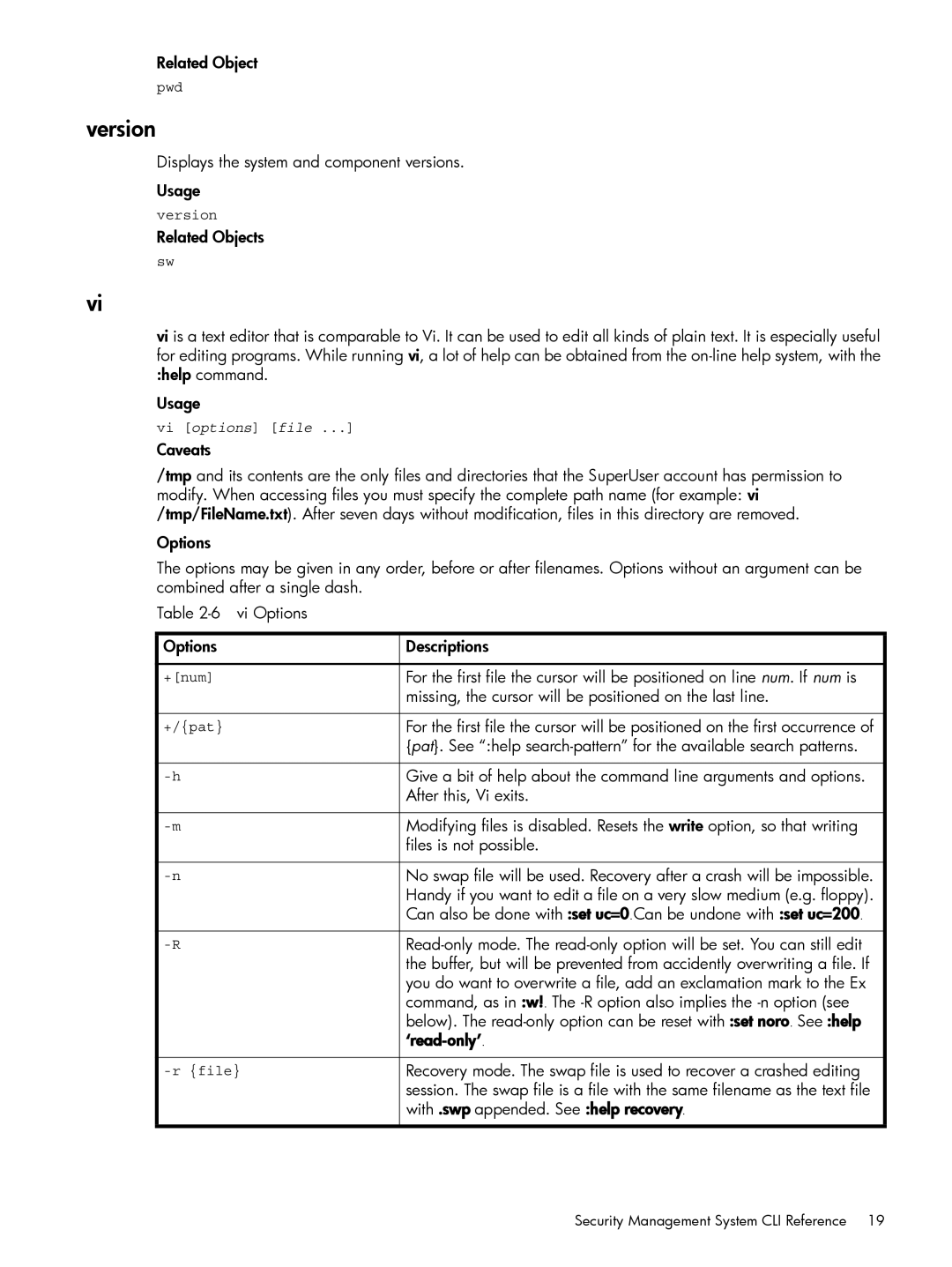Related Object
pwd
version
Displays the system and component versions.
Usage
version
Related Objects
sw
vi
viis a text editor that is comparable to Vi. It can be used to edit all kinds of plain text. It is especially useful for editing programs. While running vi, a lot of help can be obtained from the
Usage
vi[options] [file ...]
Caveats
/tmp and its contents are the only files and directories that the SuperUser account has permission to modify. When accessing files you must specify the complete path name (for example: vi /tmp/FileName.txt). After seven days without modification, files in this directory are removed.
Options
The options may be given in any order, before or after filenames. Options without an argument can be combined after a single dash.
Table
Options | Descriptions |
|
|
+[num] | For the first file the cursor will be positioned on line num. If num is |
| missing, the cursor will be positioned on the last line. |
|
|
+/{pat} | For the first file the cursor will be positioned on the first occurrence of |
| {pat}. See “:help |
|
|
Give a bit of help about the command line arguments and options. | |
| After this, Vi exits. |
|
|
Modifying files is disabled. Resets the write option, so that writing | |
| files is not possible. |
|
|
No swap file will be used. Recovery after a crash will be impossible. | |
| Handy if you want to edit a file on a very slow medium (e.g. floppy). |
| Can also be done with :set uc=0.Can be undone with :set uc=200. |
|
|
| the buffer, but will be prevented from accidently overwriting a file. If |
| you do want to overwrite a file, add an exclamation mark to the Ex |
| command, as in :w!. The |
| below). The |
|
|
|
|
Recovery mode. The swap file is used to recover a crashed editing | |
| session. The swap file is a file with the same filename as the text file |
| with .swp appended. See :help recovery. |
|
|
Security Management System CLI Reference 19
